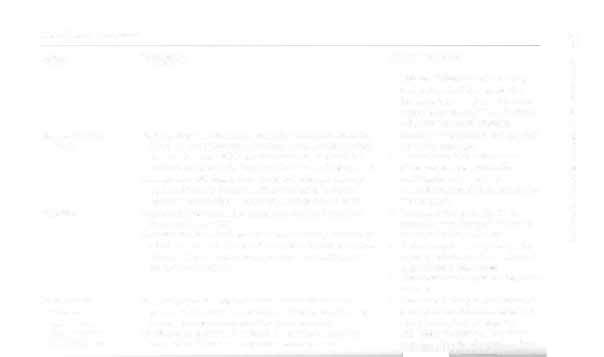i bc27f85be50b71b1 (250 page)
Read i bc27f85be50b71b1 Online
Authors: Unknown

;!
the drain is in place.
� �
•
Patients are often instructed to avoid
�
coughing while practicing postoperative deep breathing exercises.
• Over-drainage or under-drainage
complications include tension
pneumocranium, central herniation
of the brain, compression of the brain
stem. and subdural hematoma.
• Monitor the patient for any changes
in neurologic status. Notify nursing
inunediately if any changes arc noted.


,.
�
Midline catheter
Purpose: delivers i.v. medications or fluids for up to 4-6 wks.
•
Do not use blood pressure cuff on
�
Cannot be used co draw blood.
the involved extremity.
"
Consists of: a 3- to 8-in. peripheral catheter placed via the
x
antecubital fossa intO the basilic or cephalic vein.
Nasoenteric feeding
Purpose: placed for enreral feedings when patients are unable
•
The position of the tube in the nostril
;::
rube (Dobbhoff
to rake in adequate nutrition by mouth.
and the back of the throat can be
'"
"
rube)
Consists of: a small-diameter, -26 mm or No. 7-10 French,
irritating to the patieor and may
§
cube inserted via the nostril, through the esophagus into
inhibit a cough.
:h
the stomach or duodenum. and held in place with tape
c
•
The rube often hangs in fronr of the
'"
across the nose.
parienr's mouth and may also hinder
"
�
airway clearance.
r
•
The patient may be more comfortable
.8
if the tube is positioned away from
c
his or her mouth and raped to the
�
forehead or cheek.
�
•
The rube can be dislodged easily.
z
Check that the tape is secure.
�
Notify rhe nurse i f rhe tube
becomes dislodged.
�
•
Patients may be on aspiration
precautions.
g
•
Place feedings on hold when the head
of the bed is flat to rnjnimize the risk
�
of regurgitation or aspiration.
ti
;;J
'D



Table lli-A.6. Continued
00
o
o
Device
Descri ption
Clinical Implications
,.
�
•
This small-diameter rube can clog
easily; some facilities require that
Q
feeding rubes be flushed with water
1::
when placed on hold for > 15 mins to
J:
,.
Z
minimize the risk of clogging.
"
Nasogastric tube
Purpose: keeps the stomach empty after surgery and rests the
1.)
•
See above (Nasoenteric feeding tube)
o
(NGT)
bowel by preventing gastric contents from passing through
for positioning tips.
"
the bowels. Some NGTs allow access to the stomach for
o
Ask me nurse il me tube may be
o
'"
medications or tube feedings (see Nasoenteric feeding rube).
disconnected from suction for
�
J:
Consists of: a rube inserted via the nostril, through the esophmobilization of the patient.
-<
�
agus, and into the stomach. Often attached to low-level
•
When disconnected from suction, cap
�
suction pressure. Held in place with tape across the nose.
the open end.
r
�
Nebulizer
Purpose: delivers inhaled medications, usually bronchodi
•
Treatment time is usual1y 10-20
lators and mucolytics.
mms; however, the medications are
�
Consists of: a hand-held chamber with a mouthpiece through
usually effective lor 3-6 hrs.
�
which pressurized air aerosolizes medications that are then
•
Patients may be bener prepared for
inhaled. May deliver medications through ventilator or
mobility activities or airway clearance
tracheostomy rubing.
after nebulizer treannentS.
•
These treatments are often referred to
as nebs.
Percutaneous
Purpose: provides long-term access for nourishment to
•
Place tube feedings on hold when the
endoscopic
patients who are unable to tolerate food by mouth. May
head of the bed is flat to minimize the
gastronomy!
be used to supplement nutrition taken by mouth.
risk of regurgitation/aspiration.
jejunostomy tube
Consists of: a feeding tube placed by endoscopy into the
•
PEj tube is considered postpyloric;
(pEG/PE]) tube
stomach or jejunum through the abdominal wall.
therefore, the risk of aspiration from
is minimiz.ed.


>
• This small-diameter rube can clog
:g
z
easily; some facilities require thar
"
feeding rubes be flushed with water
x
when placed on hold for > 1 5 mins
to minimize the risk of dogging.
3:
Percutaneous sheath
Purpose: dilates a vein to provide a channel for introduction
•
The patient may be mobilized with
..,.,
51
introducer (Cordis)
of pulmonary catheter.
the sheath in place once the
�
Consists of: a Teflon sheath that often has a port for
,..
I.V.
pulmonary cameter has been
access.
�
removed.
E;
• A secure dressing should cover the
�
sheath during any mobilization, as
,..
me large bore opening of me shearh
.8
can allow air into the venous system
s
�
if rhe shearh is dislodged.
;;:
Peripheral intravenous
Purpose: provides temporary access for delivery of medi
�
•
Avoid using blood pressure cuff on
line
cations, fluids or blood transfusions. Cannot be used to
the involved exuemity.
2:
draw blood.
•
Watch i.v. rubing for kinks or
;!
'"
Consists of: a short catheter, 0.75-1.00 in. long, inserted into
occlusions.
>
a small peripheral vein.
•
Position the patient to avoid
�
occluding flow.
()
•
Observe the patient for signs of
>
'"
infiItrared i.v. or phlebitis: localized
'"
